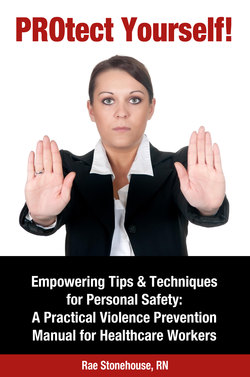Читать книгу PROtect Yourself! Empowering Tips & Techniques for Personal Safety: A Practical Violence Prevention Manual for Healthcare Workers - Rae Stonehouse - Страница 28
На сайте Литреса книга снята с продажи.
Communication with a Disturbed Individual General Attitude and Approaches: A.Attitude or feeling state
Оглавление•Control your own behaviour. Remain calm (“mirror calm”).
•Be non-judgmental.
•Avoid threatening words or actions.
•Don’t take insults personally.
•Do not enter a power struggle.
•Use “soft focus” eye contact and an expression that says “I’m your friend, not your enemy”.
•Show concern without anger.
•Be in firm but kindly control.
•Be empathetic. (Remember “Hurt People, Hurt People”). Show that you have listened and understood how the individual feels. “I heard you say ...”; “As I understand it ...” ; “I know it is difficult for you, how can I make it easier?”
•Show respect, if only because he/she is a human being and all human beings are entitled to respect. Show the person that you are for him/her, not neutral and not against him/her.
•Be genuine. Don’t respond in an institutionalized or stereotyped professional manner. Try to affect an open, spontaneous interaction style. Use your own language and avoid buzz words that might anger the person e.g. “It is our policy ...”
•Be concrete. Deal with the individual in and with specific, concrete feelings, behaviours and directions. Do not be vague. Do not lie.
•Recognize and reinforce steps to regain control. Use positive gestures and language.
•Trust your intuition and feelings. Ask the person if you are correct. For example, “I have the feeling you are upset because your daughter couldn’t visit today. Am I right or wrong about that?”
•Be aware of personal responses to aggressive behaviour. Caregivers who project their own feelings of rage and fear onto the impaired will overestimate the potential for violence and resort to excessive use of restraints, physical or chemical.
•Heed inner dialogue (awareness of counter-transference reactions).
•Avoid the “saviors” or “macho” attitude in an effort to live up to expectations of on-lookers or to compensate for personal fears.
